Major League Baseball is in the throes of major operational and technological change. From this year’s rollout of a greatly expanded instant replay system to the forthcoming lifestyle-oriented series on MTV2 featuring MLB players, baseball is actively going into places that for years it was accused of avoiding. But more can still be done, particularly with the game enjoying unprecedented financial health and a new commissioner poised to arrive in early 2015. What follows are a few ideas to improve the game.
Install a pitch clock to speed up game
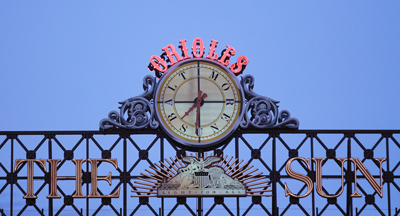 |
Baseball needs to keep an eye on the clock.
Photo by: Getty Images |
Few fans have an issue with three-hour games. But three-hour games with lots of lags and minimal action? That’s a problem. MLB Commissioner Bud Selig has spoken for years about improving the pace of play, but several rules already on the books regarding time between pitches remain at best loosely enforced. The shot clock revolutionized basketball; a pitch clock could similarly transform baseball. Between that and more stringent umpiring on this issue, such as not allowing batters to step out of the batters’ box as much between pitches, big gains could be made in creating a crisper on-field product.
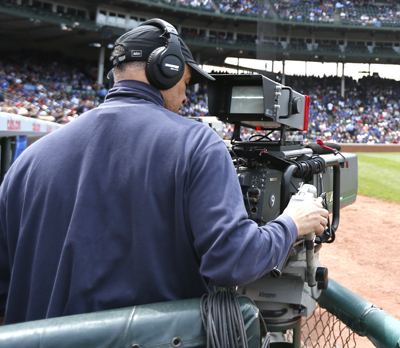 |
Too many fans are missing out on game coverage.
Photo by: Getty Images |
End fan-frustrating blackouts
This has been a thorny issue among fans and league officials for years. The new TV contract with Fox going into effect this year has some relaxed measures that allow more people to see the network’s Saturday coverage through digital devices. MLB’s TV territorial map, however, still long predates the Internet and has not been materially updated to correct situations where some cities have as many as six teams blacked out from out-of-market packages. Protecting a local team’s interests is perfectly defensible. Beyond that, though, the overriding goal should be to provide fans with more baseball, not less.
Provide a change of scenery for regular-season games
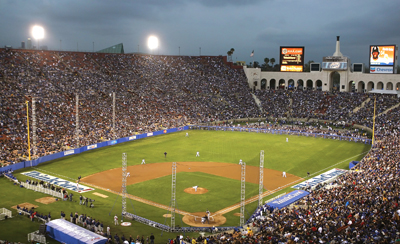 |
Fans packed Memorial Coliseum for the 2008 Dodgers-Red Sox exhibition game.
Photo by: Getty Images |
Fans love the Winter Classic so much that the NHL created a whole series of outdoor games this season. There’s no reason why MLB can’t explore a similar endeavor. International contests such as the two games being played by the Los Angeles Dodgers and Arizona Diamondbacks this month in Australia are fine, but there are plenty of iconic American venues where MLB could explore staging a game. One recent example that worked was the Dodgers-Red Sox exhibition game played at Los Angeles Coliseum in 2008.
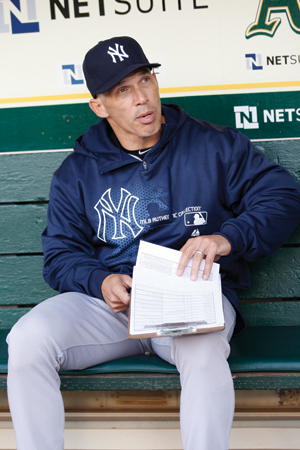 |
| Photo by: Getty Images |
Embrace technology in the dugouts
MLB Advanced Media has won industry praise for positioning baseball as a digital trailblazer and continues to push hard on what it calls “turning ballparks into crucibles of technology.” But when game time arrives, managers must revert back to paper binders, to the point where New York Yankees manager Joe Girardi is nicknamed “Joey Looseleafs.” It becomes laughable when just behind every dugout, a video room has all the latest technology, yet none of that can go up a simple half flight of steps. The time has arrived for tablets in the dugout.
Re-think the structure for Opening Day
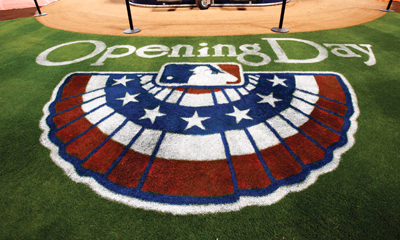 |
More could be done to make Opening Day a bigger event.
Photo by: Getty Images |
Already sort of an unofficial holiday among baseball fans, there recently was a Budweiser-sponsored marketing push to turn Opening Day into a federal holiday. That’s unlikely at best. What would be welcome, though, is more predictability and structure in the Day 1 schedule, which from year to year is now a mishmash of various matchups. One idea is to stage just one game on the day, involving the prior year’s World Series participants. That would require an operational shift, because each season’s MLB schedule is typically completed by August of the previous year, before the World Series. But more should be done to make Opening Day a bigger event than just a simple slate of games with some extra national broadcast windows.
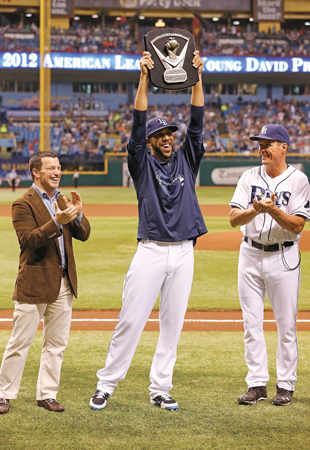 |
Imagine handing out the Cy Young at a star-studded awards show.
Photo by: Getty Images |
Turn the postseason awards into a single mega-event
MLB’s series of postseason awards such as Most Valuable Player and the Cy Young Award, determined by the Baseball Writers Association of America, are announced on MLB Network over the course of four days during a so-called Awards Week. Those cable TV announcements are fine enough, and do represent an evolution from simply announcing the winners on the Web. The next step would be to combine all those awards into a single, star-studded gala to be held each November. There are some real obstacles to such a plan, notably ensuring player attendance soon after the long grind of a season. But turning this idea into reality could help engage casual fans during the offseason and reclaim some mindshare from college and pro football.
Revamp the Home Run Derby
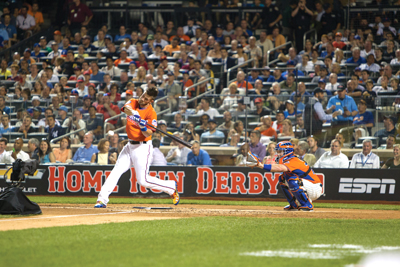 |
| Photo by: Getty Images |
The home-run hitting contest on the eve of the annual All-Star Game is traditionally ESPN’s highest-rated programming of the summer. But the event is also a chore to watch, with the first round alone typically lasting two hours. And similar to the NBA’s dunk contest, the Derby suffers from a tired, outdated competition format. There are plenty of solid alternate ideas out there, ranging from a bracket-style format to an “inning”-based structure akin to the old Home Run Derby TV show of the 1960s, each of which would be a big improvement on the status quo. What likely lies on the tail end of such an effort is increased fan and corporate interest, and even better TV ratings.
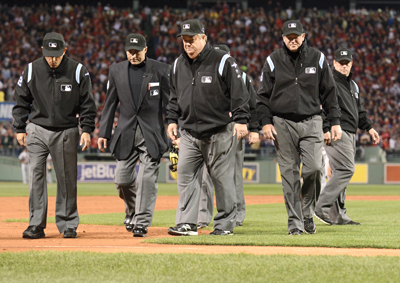 |
| Photo by: Getty Images |
Hold umpires publicly accountable
With the expanded instant replay system going into effect this season, umpires have more help than ever getting calls right. It must be said that, on balance, umpires in baseball do an excellent job. But players have their performance constantly charted and analyzed. Managers are hired and fired based on winning percentage. Owners, too, get scorecards in the forms of wins and losses, attendance, TV ratings, merchandise sales, and other data. But there is no regular, public performance measurement for umpires. We know that postseason umpiring assignments are based on merit, but we don’t know the exact calculations that go into those choices. Some type of grading or scoring, with regular public updates, would help remove a shroud of mystery around the evaluation that now exists around a critical component of the game.
Eliminate the pitcher batting in the National League
 |
All pitchers should be able to give the bat a rest.
Photo by: Getty Images |
For years, MLB Commissioner Bud Selig has spoken of his fondness for the debate between the American League using the designated hitter, and the National League not, and how that debate helped spur fan interest in baseball overall. But in 2014, it’s silly for half of the league to be playing under one set of rules and the other half playing under another, particularly with everyday interleague play now a reality. No other major sport has a situation where a player is as routinely unsuited to the competitive rigors at hand as a pitcher batting. It’s essentially analogous to a quarterback in football lining up at defensive end. And with MLB industry revenue so flush, there is no real excuse for NL team owners worried about salary escalation by having to pay for another power hitter.












